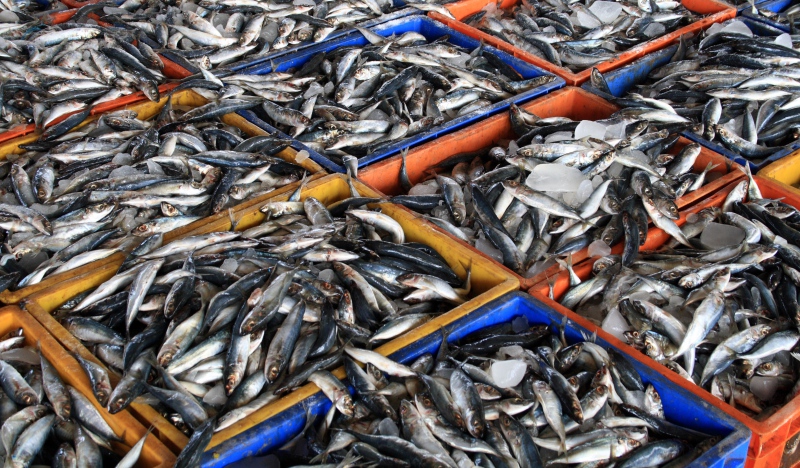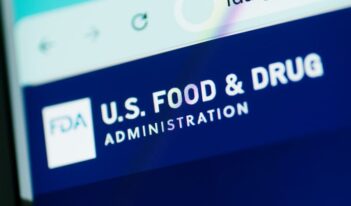
Government watchdog finds that FDA is not properly inspecting imported seafood.
The United States imported more than 6 billion pounds of seafood from 140 countries in 2019. These imports made up a striking 90 percent of all seafood consumed in the United States.
The U.S. Food and Drug Administration (FDA) certifies imported seafood to ensure it meets health and safety standards. But can consumers take FDA at its word? According to a recent U.S. Government Accountability Office (GAO) report, the answer is maybe not.
Between 2014 and 2019, FDA issued 125 warning letters to seafood importers and processors for food safety violations that pose a serious risk to public health. But FDA conducted timely follow up for only 14 of these violations, and it has yet to follow up at all on more than 50 violations. In the meantime, the seafood companies that received these warning letters continue to ship their products to the United States.
GAO recently reviewed FDA’s warning procedures for companies that commit significant safety violations. In its report, GAO finds that FDA rarely follows its own procedure to ensure that companies adequately remedy the serious safety violations flagged in FDA’s warning letters.
In passing the Federal Food, Drug, and Cosmetic Act in 1938, the U.S. Congress prohibited the sale of food that is “adulterated” or “prepared, packed, or held under insanitary conditions” where it may be “contaminated with filth” and harmful to consumers’ health. FDA routinely inspects seafood importation and processing companies for significant violations to ensure their compliance with federal law.
Seafood importers and processors commit significant violations if they do not properly identify likely food safety hazards, such as the presence of salmonella. Other serious violations include failing to control and ensure appropriate temperatures for seafood products or sufficiently document safety procedures.
When FDA identifies a significant violation, the agency either immediately places the company under an import alert or it issues a warning letter to the company.
FDA then publishes import alerts online to notify the public that there is sufficient evidence to presume that a seafood importer or processor’s products violate the Food, Drug, and Cosmetic Act. Companies can typically continue to import their products while on import alert while FDA conducts further inspection.
FDA issues warning letters to companies as a tool to achieve “prompt voluntary compliance” after the agency discovers a health violation. If the companies do not take corrective action, FDA can pursue additional enforcement action, including criminal sanctions and import bans.
Congress asked GAO to review FDA’s warning letter issuance procedures, and GAO identified several key procedural inadequacies related to FDA’s surveillance of imported seafood.
GAO found that FDA failed to issue warning letters according to established procedure. Under FDA’s own policies, the agency should issue a warning letter for any significant violations within four months after inspection. FDA, however, took an average of six months to issue a warning letter.
Perhaps more concerning, FDA concluded its investigation into companies that had received warning letters without proper follow-up inspections. Once FDA confirms that a company has remedied any identified health violations, FDA issues a closeout letter—signaling that its investigation is complete. Yet out of the 73 closeout letters that FDA issued between 2014 and 2019, FDA inspected only 26 of the companies.
Furthermore, companies are not supposed to receive closeout letters if they are on the active import alert list. FDA, however, issued four closeout letters to companies with an active import alert. Of these companies, FDA placed one on alert for improperly inspecting their products and the other three for the potential presence of pathogens in their products. By issuing closeout letters before conducting additional inspections, FDA permitted the companies to continue importing and processing seafood without ensuring their compliance with federal law.
Finally, GAO found that, for the 97 companies that received a warning letter but not a closeout letter, FDA rarely conducted any follow-up action. FDA placed some of these companies on import alert for their violations, but for approximately half of these companies, FDA had taken no further action as of March 2020. That finding is striking because FDA issued most of its warning letters more than three years ago. Without follow-up, it is unclear whether these companies continue to present threats to public health.
To resolve these failures and to protect consumers, GAO recommends that FDA establish a warning letter monitoring system and develop performance goals to determine effectiveness of warning letters.
Following a previous GAO investigation of FDA’s inspections of seafood processors, FDA created a dashboard to track follow-up actions in response to warning letters issued to domestic seafood companies. The dashboard does not, however, include a feature to document FDA’s follow-up to a warning letter within four months of discovering violations, nor does it track follow-up inspections within six months of issuing a warning letter. GAO recommends FDA amend its system to track key steps in the safety verification process.
Also, as a first step toward assessing warning letter effectiveness, GAO recommends that FDA create performance goals, such as conducting follow-up inspections within six months for a specified percentage of issued letters. GAO expects that these metrics would better allow FDA to test the waters and understand if warning letters are an effective tool to remedy safety violations. If they are not, GAO suggests the agency should consider developing new, more effective oversight processes for seafood safety.
When food is not safe, companies can themselves voluntarily recall those products to protect consumers. But without proper inspections, consumers may be exposed to the risk of unsafe seafood. FDA agreed with GAO’s recommendations, and affirmed its commitment to implement the recommendations and do more to help ensure seafood safety.



